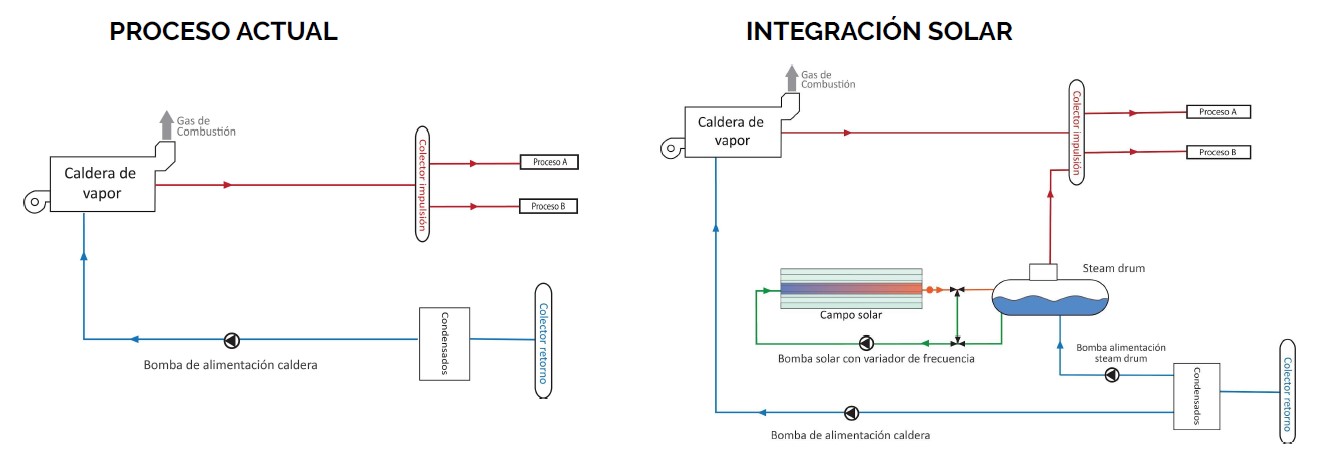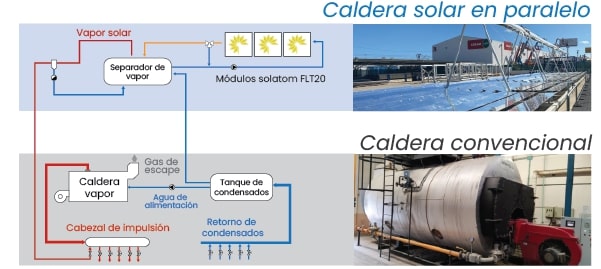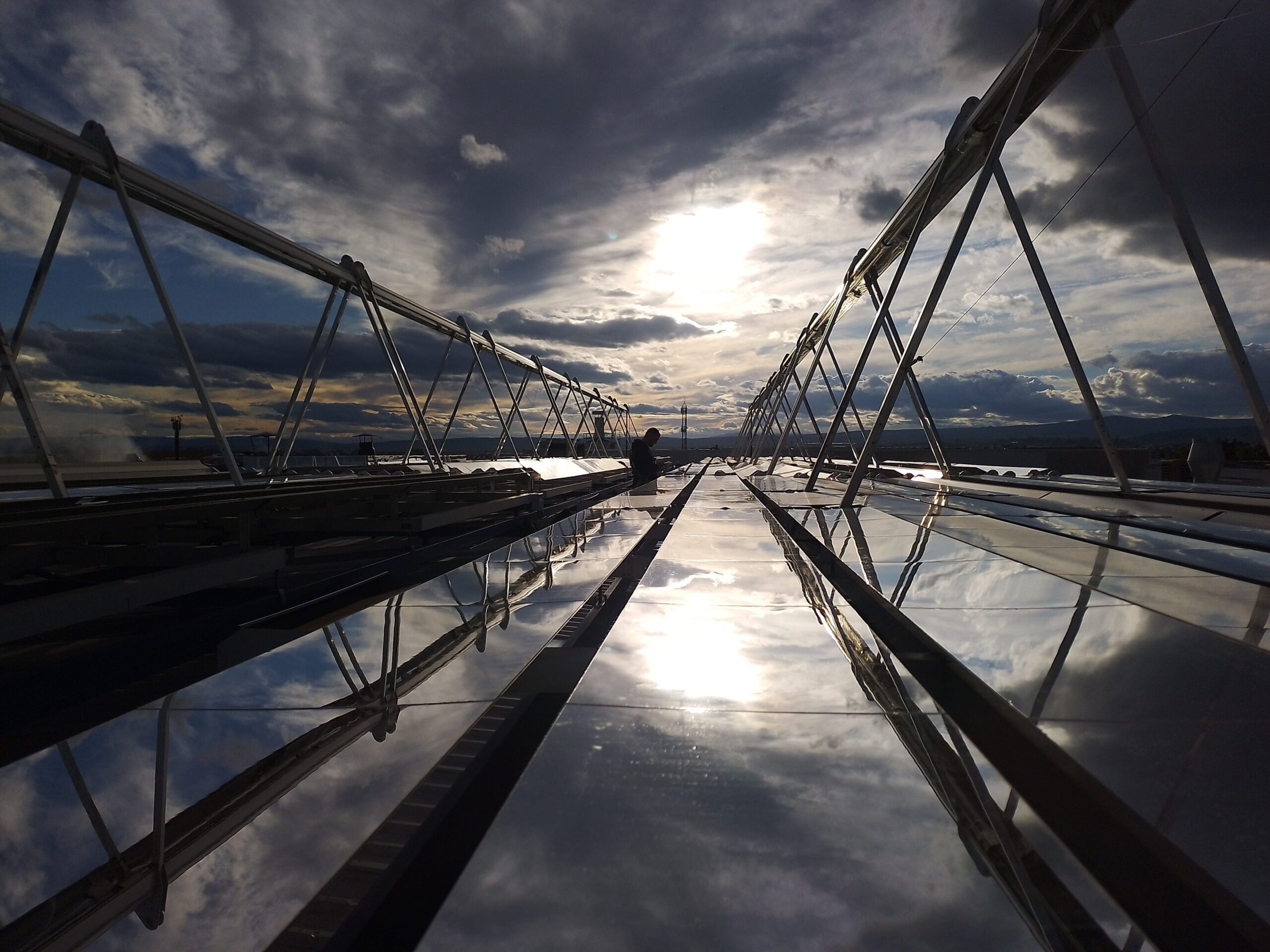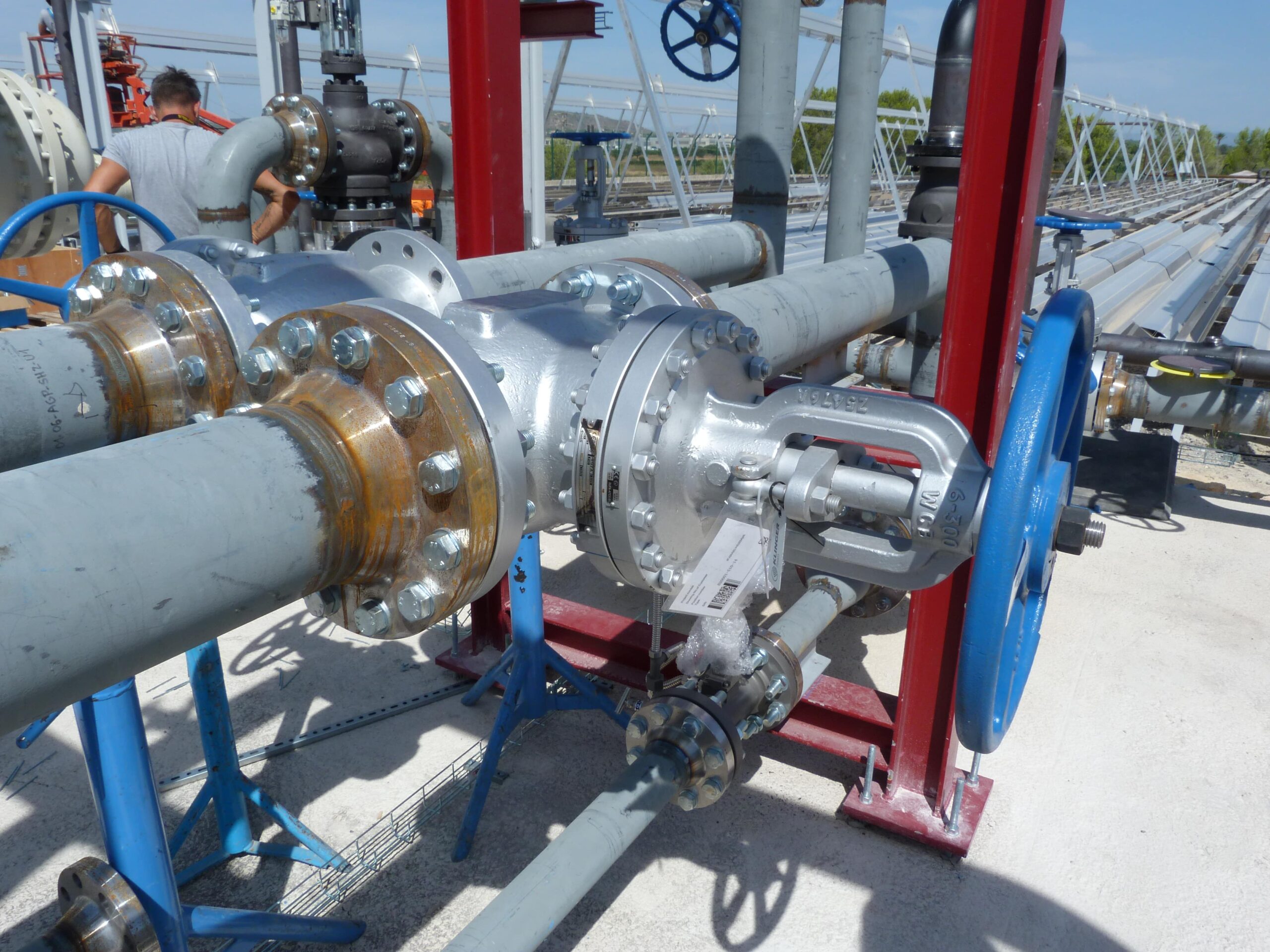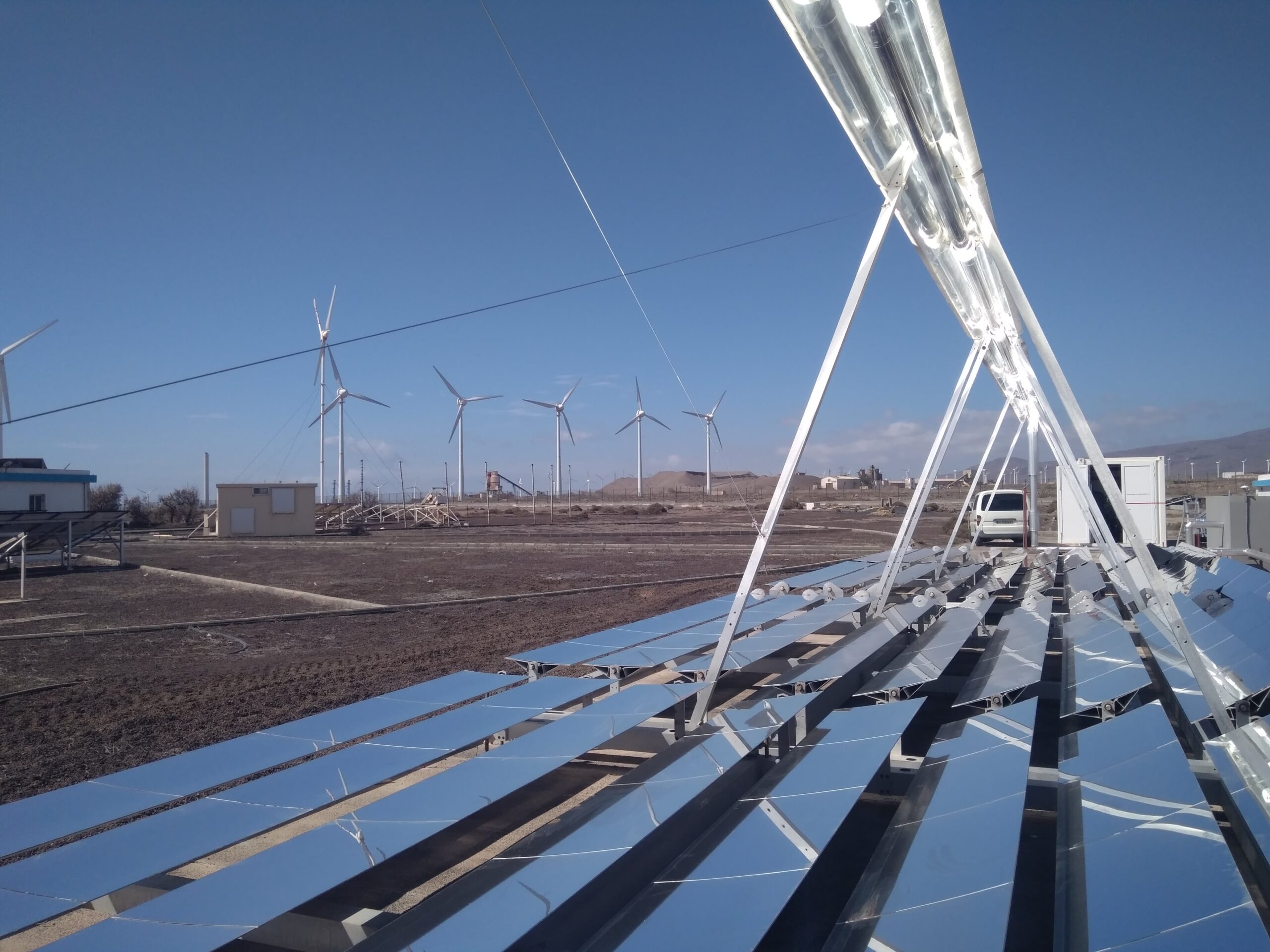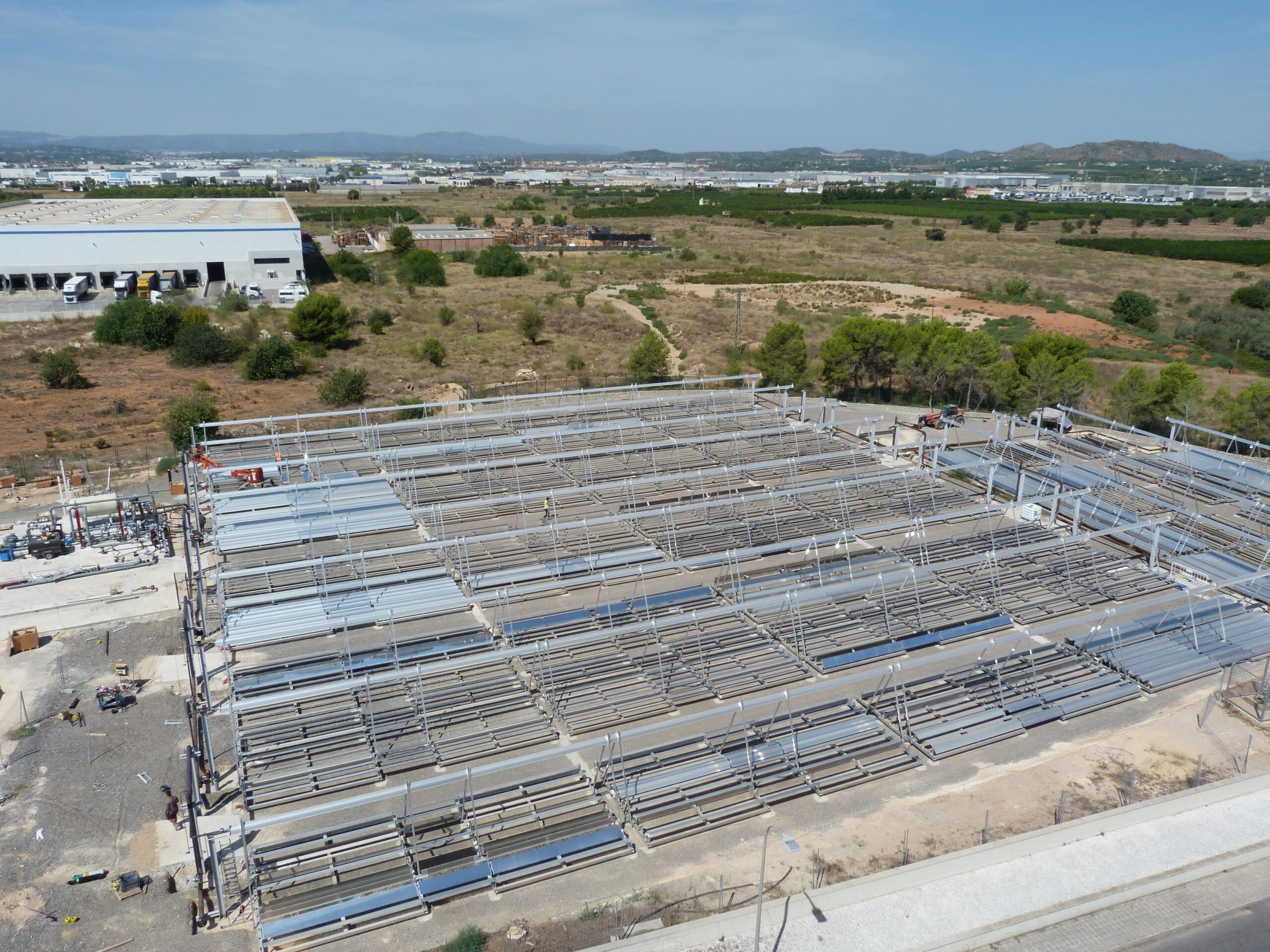Concentrated solar power
SOLAR STEAM AND THERMAL OIL BOILERS
Technology in numbers
The industrial sector is responsible for one third of the world’s energy demand. Decarbonizing this demand is one of the great challenges facing humanity. Although it is possible to electrify low-temperature processes, steam generation and high-temperature generation still relies on fossil fuels. Concentrating solar power is a sustainable and competitive alternative to conventional boilers.
Industrial heat demand
2/3 of the energy demand is heat.
The industrial sector accounts for one third of global energy demand. Of that third, almost 75% of the energy is heat in the form of some type of fluid, mainly steam, hot water or thermal oil.
Decarbonizing this demand is one of the great challenges facing humanity. Although it is possible to electrify low-temperature processes, steam generation and high-temperature generation still relies on fossil fuels.
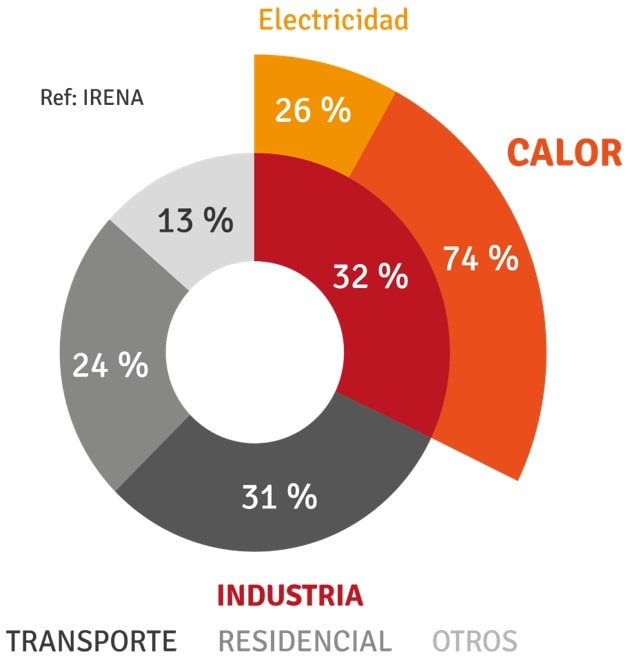
- Industrial applications
- Operation of a solar boiler
- Financial savings
La mayoría de sectores industriales tiene procesos donde se necesita calor. Cuando las temperaturas son bajas es posible utilizar energía eléctrica o energía solar sin concentración. Sin embargo, cuando las temperaturas aumentan las opciones están más limitadas. La energía solar de concentración es una solución idónea para estas aplicaciones. Ver aplicaciones en industria:
Alcoholes y destilados
Alimentación animal
Panadería
Cerveza
Enlatados y jugos
Cocoa, chocolate y dulces
Café y te
Productos lácteos
Aceites y grasas
Pescado
Carne
Bebidas no alcohólicas
Preparados
Pastas
Azúcar
Vino
Productos agroquímicos
Cosméticos y detergentes
Productos químicos básicos
Pinturas y barnices
Apicultura
Criado de ganado
Producción de huevos
Cultivos no perennes
Lavandería industrial
Productos de plástico
Productos de caucho
Telas
Fibras textiles
Acabado de textiles
Bienes de cuero
Papel y cartón
Otros papeles
Corcho
Madera
Productos farmacéuticos básicos
Coque
Refino de petróleo
Una caldera solar realiza la misma función que una caldera convencional, pero utilizando energía solar como combustible. Con una caldera alimentada por energía solar es posible alcanzar las presiones y temperaturas de trabajo, de la mayoría de procesos industriales.
Para alcanzar las altas temperaturas/presiones se utilizan espejos que siguen la trayectoria del sol, reflejando su luz hacia un tubo por donde se hace pasar el fluido. A la salida del tubo, el fluido se lleva al circuito de la fábrica. Dependiendo del tipo de proceso se utiliza una integración diferente.

The savings achieved depend on 3 main factors. Depending on these factors, savings of up to 35% can be achieved. The factors with the greatest impact are as follows:
1) The current fuel price. The more expensive the greater the savings.
2) Solar radiation. The sunnier the location, the greater the savings.
3) The type of consumption profile. The more energy is used, the greater the savings.
What is a solar boiler and how does it work?
A solar boiler performs the same function as a conventional boiler, but using solar energy as fuel. With a solar-powered boiler it is possible to reach the working pressures and temperatures of most industrial processes.
Para alcanzar las altas temperaturas/presiones se utilizan espejos que siguen la trayectoria del sol, reflejando su luz hacia un tubo por donde se hace pasar el fluido. A la salida del tubo, el fluido se lleva al circuito de la fábrica. Dependiendo del tipo de proceso se utiliza una integración diferente.
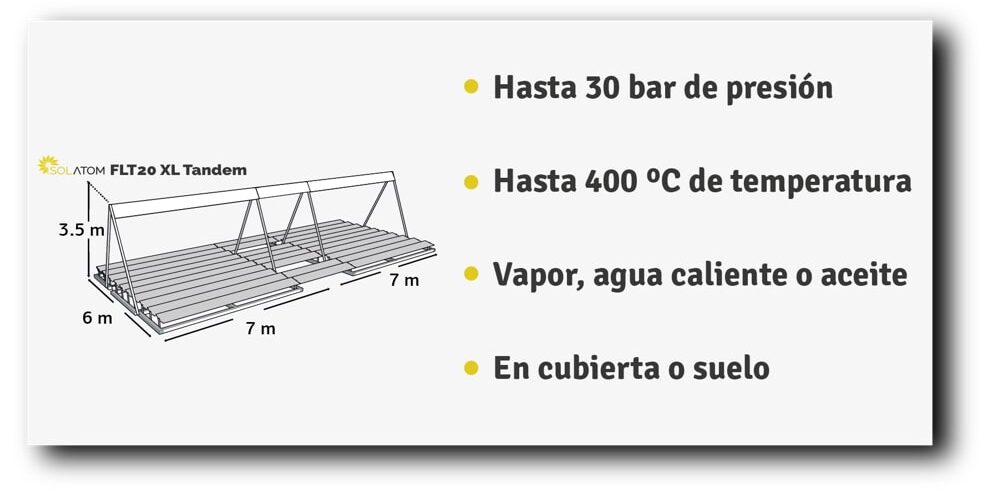
Our boilers are made up of modules. Each module is the size of a 20-foot freight container, and is shipped fully pre-assembled. Once the module is in position, it is deployed ready for connection. The modules are connected together until the desired power is reached.
Advantages over on-site assembly:
Improved optical quality of the system (factory control)
Minimizes interference with the customer during construction
Minimizes the time and space required for construction.
If I have a conventional boiler – Parallel Integration
The simplest way to integrate a solar boiler is to do it in parallel. Thus, when the sun shines, the solar boiler is in charge of producing the heat needed by the factory or storing it for future use. When there is no sun, and the storage is empty, it is the conventional boiler that takes over the production. Learn more about the types of parallel integrations here.
